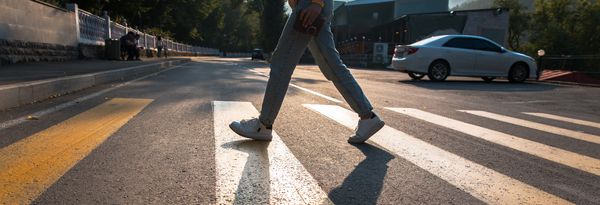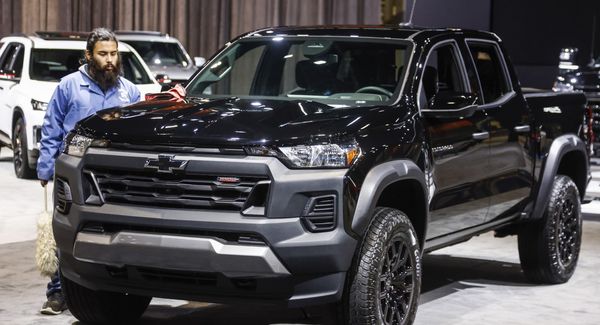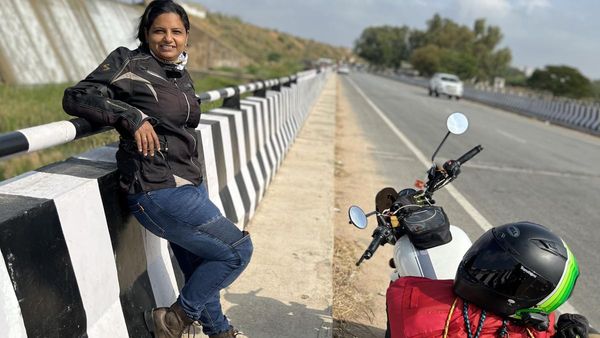
Globally, road “accidents” kill more than 1 million people a year, and are the primary cause of death for people aged under 30. Australia is no exception: land transport accidents cause the highest number of deaths in Australian children.
After a single mass shooting, Australia acted quickly on gun control. Most Australians are rightly appalled by the US’s ongoing failure to do similar, with the nation instead resorting to endless “thoughts and prayers” platitudes, active shooter drills for children, and bulletproof vests for teachers.
But with transport deaths, our own grim acceptance and collective refusal to make systemic changes are very similar. Each large, multiple-fatality crash results in thoughts and prayers in Parliament, but no legislative response. Instead of making Australia’s roads safe, responsibility is placed on those in danger instead of those creating it.
Children are taught that even the streets outside their schools are highly dangerous and must only be crossed at certain designated crossings under close supervision. They are introduced to bikes via high-stress safety drills involving hi-viz and almost militaristic manoeuvres.
In lieu of separated bike lanes and slower speed limits, regular pedestrian and bike rider behaviour is criminalised. Victoria Police recently sent the CEO of Crime Stoppers on a tour of primary schools to tell kids to obey the law crossing the road, and to remind them that they’re criminals if they forget their public transport card or helmet. They’ve even said that you should be wearing hi-viz while walking to work.
Blame is consistently placed on children, pedestrians and bike riders, rather than those who drive cars and trucks dangerously fast, or the transport departments that design unsafe, car-congested, polluted roads without safe separation.
We can trace these attitudes back to the rise of the automobile a century ago. As vehicles started becoming faster and more commonplace, they consequently started killing pedestrians. To deflect the growing outrage, car manufacturers and dealers in the USA invented the crime of “jaywalking”: instead of blaming the deadly speeding vehicles, blame the “jay” (a derogatory term similar to “redneck”, “rube” or “hick”) who dared cross the road in the wrong place.
These laws then spread globally, along with the rise of the automobile, and are now so fully ingrained that we can’t imagine hanging out on or freely wandering across streets without carefully checking for speeding cars — even though that’s how streets were for most of their history.
Just as social movements like Black Lives Matter and #MeToo have had to challenge attitudes of victim blaming (“acting suspiciously”, “driving while Black”, “dressing provocatively”, “asking for it”, etc), advocates for safer streets are continually faced with attitudes that blame pedestrians and bike riders for the danger and death they face from (drivers of) cars.
Hi-vis vests and bike lights are encouraged to “help drivers see you”. Instead of expecting drivers to slow down enough to see what’s in front of them, bike riders must purchase special equipment. While bicycle helmets may reduce head injury in some situations, they are of little help in a serious collision with a motor vehicle (a piece of polystyrene is no defence against impact from a multi-ton steel vehicle), but are made compulsory anyway.
Australia is one of the few countries in the world with mandatory helmet laws, and by far the most punitive: the fine is $277 in Victoria, and $344 in NSW, compared to $60 in New Zealand. Like many areas of law enforcement, such fines are overwhelmingly issued to poor and otherwise vulnerable people in lower socio-economic areas (Victoria Police recently settled a case where an Aboriginal man was allegedly dragged off his bike, assaulted and racially vilified by police for not having lights on his bike).
These laws worsen health, increase injury and cost lives by discouraging cycling, pushing people into more dangerous and unhealthy forms of transport. In the UK (where helmets are not compulsory), the British Medical Journal found in 2017 that the mortality rates among regular bike riders are 40% lower than for non-riders: clearly, discouraging and criminalising bike riding is much deadlier than occasionally forgetting a helmet.
Wrongly framing bike riding as an inherently hazardous activity (like base jumping or deep sea submarining) allows us to dismiss deaths and injuries as the result of victims’ own irresponsible actions, instead of facing the reality that bike riding is an inherently low-risk, health-enhancing activity only made dangerous by drivers.
Worse, transport infrastructure spending is overwhelmingly focussed on cars and trucks, and the meagre spending on infrastructure for bikes or pedestrians is only required to protect them from vehicles. Separated bike lanes are only needed for separation from cars. “Pedestrian refuges” at crossings are refuges from cars. Traffic lights are only needed when vehicles are present; even at busy bicycle intersections in the Netherlands, traffic lights are unnecessary.
The good news is that fixing all this isn’t difficult (and even benefits car drivers). Perhaps counterintuitively, streets that are safer for pedestrians and bike riders are also better for driving, because by getting more people onto bikes and footpaths, they reduce car congestion. Slower speed limit signs, pedestrian crossings and separated bike lanes can be installed in days. But overcoming our national victim-blaming mindset will take much longer.
Does Australia handle road safety properly? Let us know by writing to letters@crikey.com.au. Please include your full name to be considered for publication. We reserve the right to edit for length and clarity.










